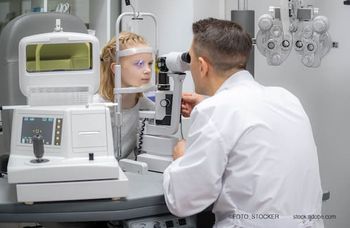
Longitudinal versus torsional phaco
Several new refractive surgical platforms have been introduced recently, and many ophthalmologists are discovering they find the new technologies to be more efficient and produce better results.
Take Home
Several new refractive surgical platforms have been introduced recently, and many ophthalmologists are discovering they find the new technologies to be more efficient and produce better results.
Dr. Hida
By Fred Gebhart; Reviewed by Wilson Takashi Hida, MD, PhD
Brasilia, Brazil-Most ophthalmologic surgeons would likely agree that newer refractive surgical platforms offer improvements over older alternatives, however, comparing two different new platforms can be more difficult, said Wilson Takashi Hida, MD, PhD.
“Most studies in our field compare new technology from one manufacturer against prior generations of technology from that same instrument maker,” said Dr. Hida, medical director and chief of cataract sector of Brasilia Ophthalmology Hospital in Brasilia, Brazil. “When it comes to torsional and transversal technologies, there were a lot of studies that began around 2010 and they all reached the same conclusion, it is a better technology, but they all looked at machines from a single manufacturer. They were all looking at newer technology so of course it should be better than what came before.
“It is more difficult to compare different technologies in a real world setting,” he continued.
Comparing, contrasting
Traditional longitudinal phaco used a jackhammer-like in and out motion for phacoemulsification. Bioengineers eventually realized that half the energy used in traditional longitudinal motion is wasted because material is only broken up when the tip moves forward. When the tip moves backwards between cuts, it only generates more energy and more heat that can damage the eye.
Bausch + Lomb introduced a more efficient longitudinal platform-the Stellaris-which cuts using an elliptical lateral motion. Power modulation and pulse shaping are combined to optimize longitudinal ultrasound energy delivery. Alcon Laboratories has also introduced the Infiniti platform, which adds torsional technology, called OZiL, to cut lens material using circular oscillations similar to turning a doorknob.
But the motion of the phaco tip is just one of several variables that can affect procedural complications and outcomes.
Power output is important, Dr. Hida noted, because lower energy output generally translates into less collateral damage to the corneal endothelium. Balanced fluidics keep the eye inflated, builds and maintains currents that bring cataract fragments to the phaco tip, and help keep the tip cool to prevent thermal injury to the eye.
Fluidics are affected by vacuum, which is a function of the type of pump used and tubing size. Micro incisions require micro tubing, but micro tubing requires more vacuum, which creates difficulties in managing fluidics.
Both platforms produced similarly good clinical results, but the Infiniti platform showed lower fluid use and shorter operative times, particularly for patients with hard cataracts.
“I use both machines on a regular basis, so there was no learning curve to affect the results of this comparison,” he said. “400 consecutive and routine cataract patients were prospectively (randomly assigned) to either the Stellaris or the Infiniti platform. Our goal was to compare the clinical and the intraoperative parameters using the same bevel-down technique with both instruments in a real-world population of real patients.”
Investigating further
The Stellaris Vision Enhancement System uses longitudinal ultrasound, a venturi pump, pulsed energy modulation energy via a straight microtip with a 150-µm stroke and a 1.8- to 2.4-mm incision. The Infiniti Vision System uses torsional ultrasound, a peristaltic pump, pulsed energy modulation via a Kelman microtip with a 100-µm stroke and a 2.2- to 2.4- mm incision. The same surgical technique was used for all eyes, including the same ultrasound pulse rate and fluidic settings.
There were no statistically significant differences in patient age or in nuclear density by either LOCS III or Pentacam PNS assessment.
The Stellaris used significantly less total ultrasound time compared to the Infiniti, Dr. Hida found, but the total case time was significantly shorter with the Infiniti system. Infiniti also showed significantly less fluid use per patient.
Despite the differences in intraoperative parameters, there was no statistically significant differences in corrected visual acuity between the two groups at 3 months after surgery. There was also no difference between the two patient groups in central cornea thickness or endothelial cell loss.
“Both machines are very good,” Dr. Hida said. “It is not just this study that shows these platforms are an improvement over older technologies. In terms of clinical results, you can use either machine and produce very good results. For patients, visual recovery after surgery is what is important and both machines did very well.”
Dr. Hida added that he is equally comfortable using either the Stellaris or Infiniti platforms.
He explained that some surgeons have preferences for one technology over another based on differences in their own experience and technique, but clinical outcomes are similarly high regardless of which instrument is used.
From a workflow perspective, Infiniti offers improved case time, which can boost patient throughput, and reduced fluid use, which might have an economic impact, Dr. Hida said.
“Some of my colleagues like one machine over another and some don’t care,” he said. “What we all agree on is that new technology is changing clinical outcomes for the better.”
Wilson Takashi Hida, MD, PhD
Dr. Hida receives research fees from Abbott Medical Optics, Alcon Laboratories and Bausch + Lomb, but no fees were received for this study.
Newsletter
Don’t miss out—get Ophthalmology Times updates on the latest clinical advancements and expert interviews, straight to your inbox.



















































.png)


